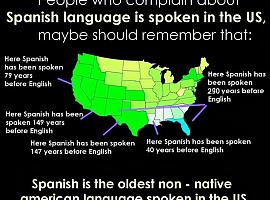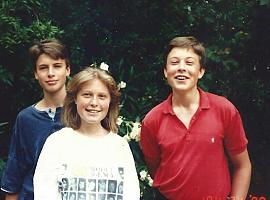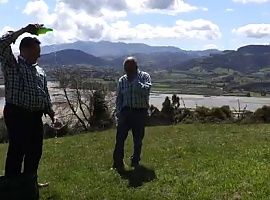On Monday, 4 April 2011, the IAEA provided the following information on the current status of nuclear safety in Japan:
1. Current Situation
Power supply to the temporary electric pumps for water supply to the Reactor Pressure Vessels (RPV) of Units 1, 2 and 3 was switched from the temporary mobile power supply to the off-site power supply on 3 April.
Lighting in a part of Units 1 - 4 Turbine Building was restored on 2 April.
On 2 April, transferring of water from the Unit 1 condenser storage tank to the surge tank of the suppression pool was completed in preparation for transferring water in the basement of the Unit 1 turbine building to the condenser. Also on 2 April, transferring of water from the Unit 2 condenser to the condenser storage tank was started in preparation for transferring water in the basement of the Unit 1 turbine building to the condenser.
A second US Navy barge arrived on 2 April carrying fresh water that is being transferred to the first barge which is pumping water to the "filtered water tank".
TEPCO has identified a possible leakage path from the Turbine Building of Unit 2 to the sea via a series of trenches/tunnels used to provide power to the sea water intake pumps and supply of service water to the reactor and turbine buildings. Initial attempts on 2 April to stop the leak, by pouring concrete into the pit, were not successful. On 3 April, the top of the trench was broken open and polymer was poured into the trench in an attempt to stop the leakage of water to the sea through the pit, but leakage has not stopped as of 00:00 UTC on 4 April.
NISA have advised the IAEA that TEPCO have been given permission by the Government of Japan to discharge 10 000 ton of low level contaminated water from their radioactive waste treatment facility to the sea. This is in order to have sufficient capacity to store highly contaminated water found in the basement of the Unit 2 Turbine Building.
In addition TEPCO will discharge 1 500 ton of low level contaminated water in the sub-drain pit for Units 5 and 6 to prevent the water in the pit from leaking into the reactor buildings and potentially damaging safety-related equipment.
TEPCO has estimated that the potential additional annual dose to a member of the public would be approximately 0.6 millisieverts (mSv), if they ate seaweed and seafood caught, from near the plant, every day for a year.
As of 07:00 UTC, 4 April the discharge had not yet commenced. The IAEA have asked NISA for additional information.
In Unit 1 fresh water has been continuously injected into the reactor pressure vessel through the feed-water line at an indicated flow rate of 6 m3/h using off-site power. In Unit 2 and Unit 3 fresh water is being injected continuously into the reactor pressure vessels through the fire extinguisher line indicated rates of 8 m3/h and 7 m3/h respectively using off-site power.
In Unit 1 the indicated temperature at the feed water nozzle of the RPV decreased from 253 °C to 243 °C and at the bottom of RPV it was stable at 113 °C. The RPV pressure indications are fluctuating and Drywell pressure is slightly increasing. The reliability of RPV pressure indications is in question. In Unit 2 the indicated temperature at the feed water nozzle of the RPV has decreased from 153 °C to 140 °C. The temperature at the bottom of RPV was not reported. Indicated Drywell pressure remains at atmospheric pressure. In Unit 3 the indicated temperature at the feed water nozzle of the RPV is stable at 114 °C and at the bottom of RPV is about 90 °C. The validity of the RPV temperature measurement at the feed water nozzle is still under investigation.
70 T of water was injected via the Spent Fuel Cooling System line to the spent fuel pool In Unit 2 by a temporary pump on 1 April. There has been no change in status in Units 4, 5 and 6. The temperature in the Common Spent Fuel Storage Facility was 32 °C at 23:10 UTC on 2 April.
2. Radiation Monitoring
Gamma dose rates are monitored in all prefectures continuously. Since 23 March, reported gamma dose rates in the 45 prefectures have decreased.
On 4 April the IAEA monitoring team made measurements at 7 locations at distances of 30 to 41 km South and Southwest of the Fukushima nuclear power plant. The dose rates ranged from 0.7 to 12.5 microsievert per hour.
At the same locations, results of beta-gamma contamination measurements ranged from 0.1 to 2.0 megabecquerel per square metre.
Since our written briefing of 1 April 2011, significant data related to food contamination was reported on 1 April (33 samples), 2 April (64 samples) and 3 April (37 samples) by the Japanese Ministry of Health, Labour and Welfare. These reported analytical results covered a total of 134 samples taken on 15 March (2 samples), 29 - 31 March (77 samples) and 1 - 2 April (55 samples). Analytical results for 133 of the 134 samples for various vegetables, spinach and other leafy vegetables, mushrooms, fruit (strawberries), various meats (beef and pork), seafood and unprocessed raw milk in twelve prefectures (Chiba, Fukushima, Gunma, Ibaraki, Kanagawa, Kyoto, Niigata, Saitama, Shizuoka, Tchigi, Tochigi and Tokyo), indicated that iodine-131, caesium-134 and/or caesium-137 were either not detected or were below the regulation values set by the Japanese authorities. One sample of shiitake mushrooms taken on 1 April in Fukushima prefecture was above the regulation values set by the Japanese authorities for both iodine-131 and caesium-134/caesium-137.
Seawater is monitored by TEPCO near the discharge points of Daiichi and Daiini plants. For Daiichi Units 1 - 4, seawater is monitored 330 m south of the common discharge point; for Daiichi Units 5 and 6 seawater is sampled 30 m south of the common discharge point. On 1 April an additional 3 points at 15 km from these sites were added following the discovery of highly contaminated water leaking into the sea from the pit near Unit 2.
IAEA Activities
The two Agency experts in BWR technology have arrived in Japan. The objective of this expert visit is to have a direct exchange of views with the Japanese counterparts. They met with officials of NISA, TEPCO, the Japanese Atomic Energy Commission and the Nuclear Safety Commission. They will also visit the off-site emergency response center and possibly visit the Fukushima Daiichi site.
The marine expert from the IAEA Environment Laboratories Monaco travelled to Japan to observe and provide advice on the collection and analysis of seawater samples. He was embarked to the Research Vessel MIRAI on 2 April and was on board until the morning of 4 April.




















